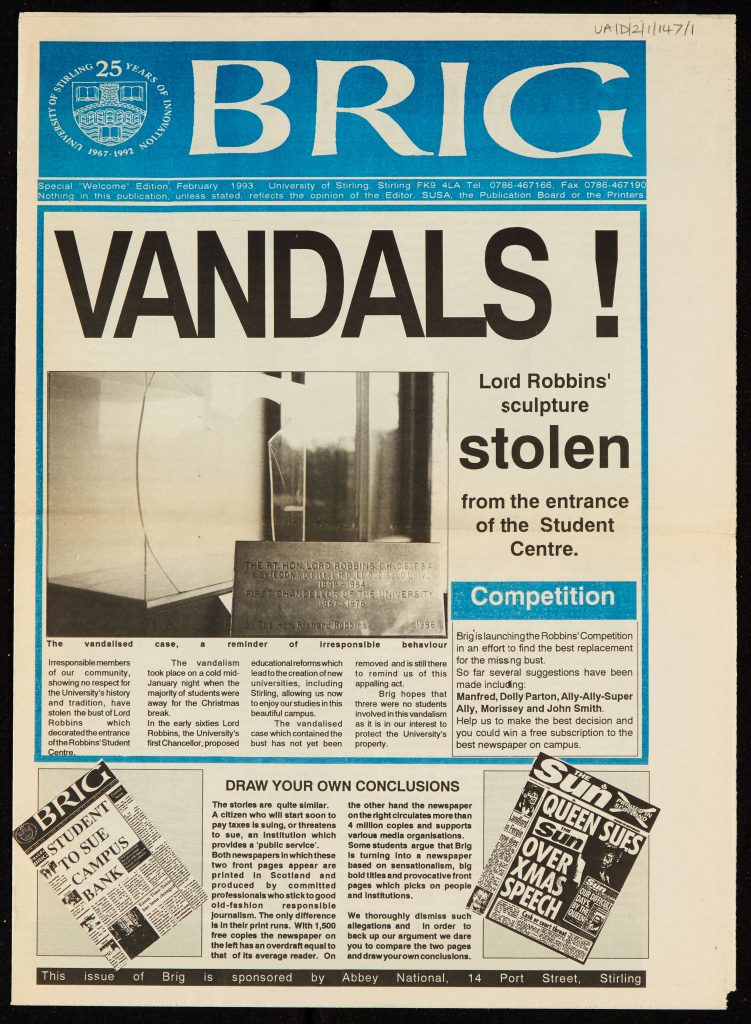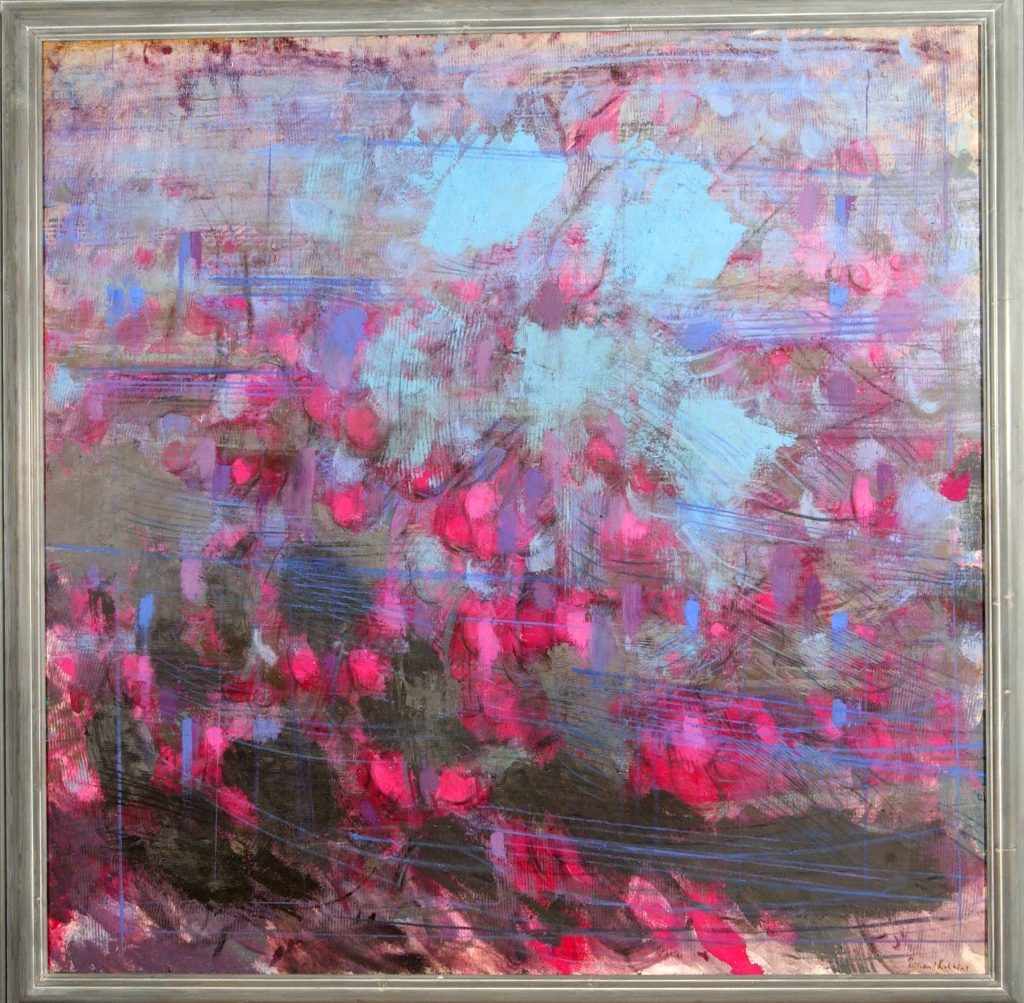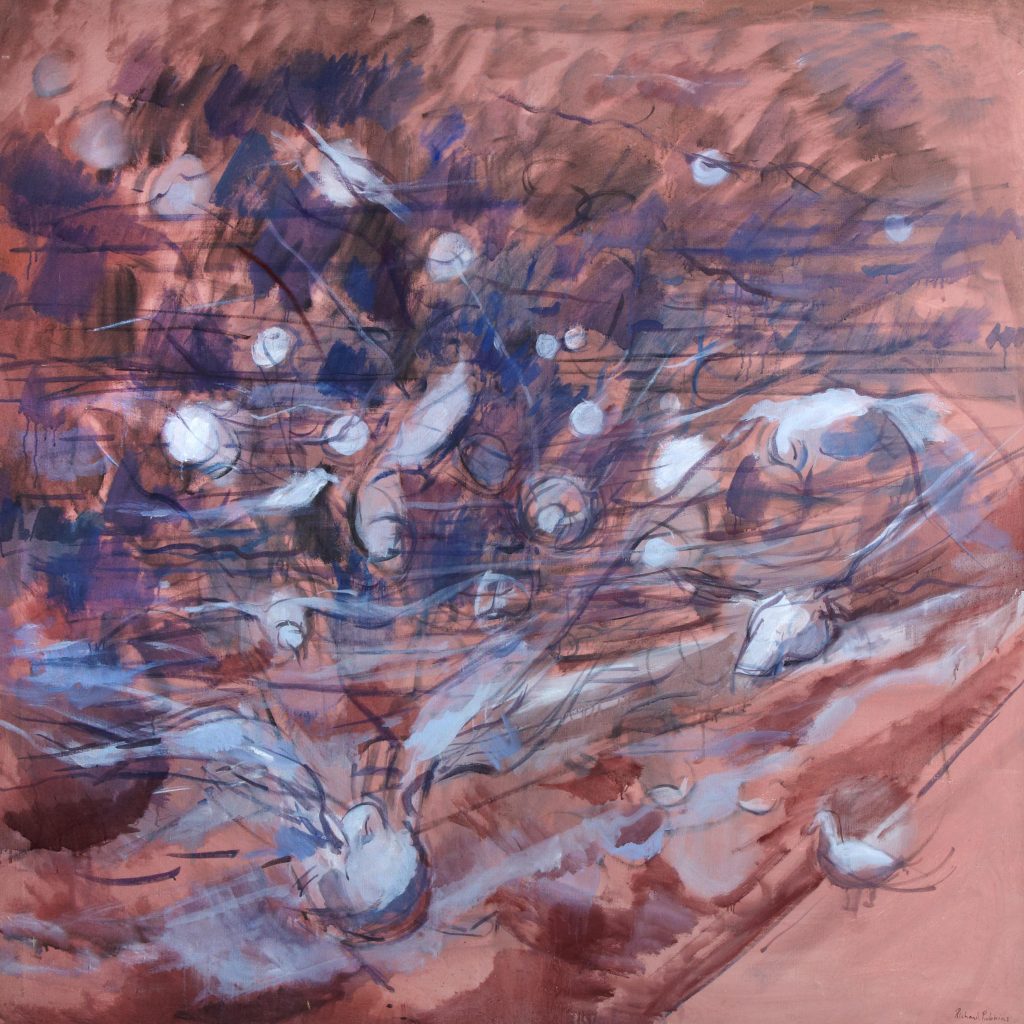
(Bronze)
Summing up Richard Robbins, after his death, one obituarist described him as ‘an artist who painted and sculpted prolifically, wrote poetry and loved sport’ and another claimed that ‘his descriptions of using wax, cast bronze, solid bronze or aluminium were a classic proof of his technical as well as artistic mastery.’
After serving in the army (1945-48), which included a spell in Venice where he began his art education, Richard Robbins studied English at Oxford and then Art at Goldsmiths and Slade in London. He specialised in drawing, painting and sculpture, and taught throughout his life (ending as Head of Fine Art at Middlesex University), but also wrote poetry and loved sport. He was elected an Honorary Member of the Royal Society of British Artists in 2004.
The artist was son of Lionel Charles Robbins, Baron Robbins, CH, CB, FBA (1898 –1984) who was Chancellor of the University of Stirling from 1967 until 1978. Lord Robbins was an eminent British economist who advocated in the ‘Robbins Report’ (1963) the immediate massive expansion of the modern university system in Britain in the 1960s. The report also recommended that university places ‘should be available to all who were qualified for them by ability and attainment’. This led to the founding of the University of Stirling in 1967.
The bust of Lord Robbins shown above, which has been at the University since the early days, might not in fact be the original version. The Art Collection has long been aware of a rumour, never properly confirmed, that it was at one time in its history thrown into the loch by some students. While attempting to corroborate this story with some hard evidence, the University Archivist Karl McGee dug out this copy of Brig, the student newspaper, from February 1993, with the following headline: ‘Vandals! Lord Robbins’ sculpture stolen from the entrance of the Student Centre’.
We have so far not been able to find out whether it was stolen for good, and replaced with the version in the Pathfoot Building, or whether it was retrieved from the loch or elsewhere and reinstated. We will investigate further….watch this space for more…!
What we do know is that after that date, Richard Robbins generously donated more of his artworks to the University. Another well known sculpture by him, ‘Adam & Eve’, now stands beneath an apple tree in a Pathfoot courtyard. Eve is even sometimes to be found with a tempting apple in her hand….

(Bronze)
“There is something appropriate about the presence of Adam and Eve in the first courtyard of the Pathfoot Building. Their story starts with the phrase ‘In the beginning…’ and Pathfoot is where the University of Stirling’s story begins too. The sculpture was a gift to the University of Stirling by Richard Robbins – the son of Lord Robbins, its first Chancellor and one of the most important figures in the development of British higher education in the past 100 years. The tree from which the forbidden fruit was hanging is described in Genesis as the ‘tree of knowledge’ and the pursuit of knowledge is what this university is all about.”
Tom Collins in ‘Fifty: The University of Stirling in 50 objects’

(Oil on canvas. Gifted 1995)
A further three paintings were also donated in the mid 1990s by Robbins to Stirling. From an obituary again: ‘Even while he was still teaching, Richard managed to produce a wide range of paintings, etchings and sculpture. He adored colour and, under his hand, flowering shrubs would tumble brilliantly out of vast canvases. He was fascinated by the changing patterns of light, weather and seasons, and for a time concentrated on the Hampstead ponds of north London. At Lyme Regis, Dorset, where he had a cottage and studio, he tried to capture the swirling movement of seagulls [as seen below], the surf, the sun rising over the horizon and people on the beach.’ (Judy Hillman, The Guardian, 11th October 2009)


